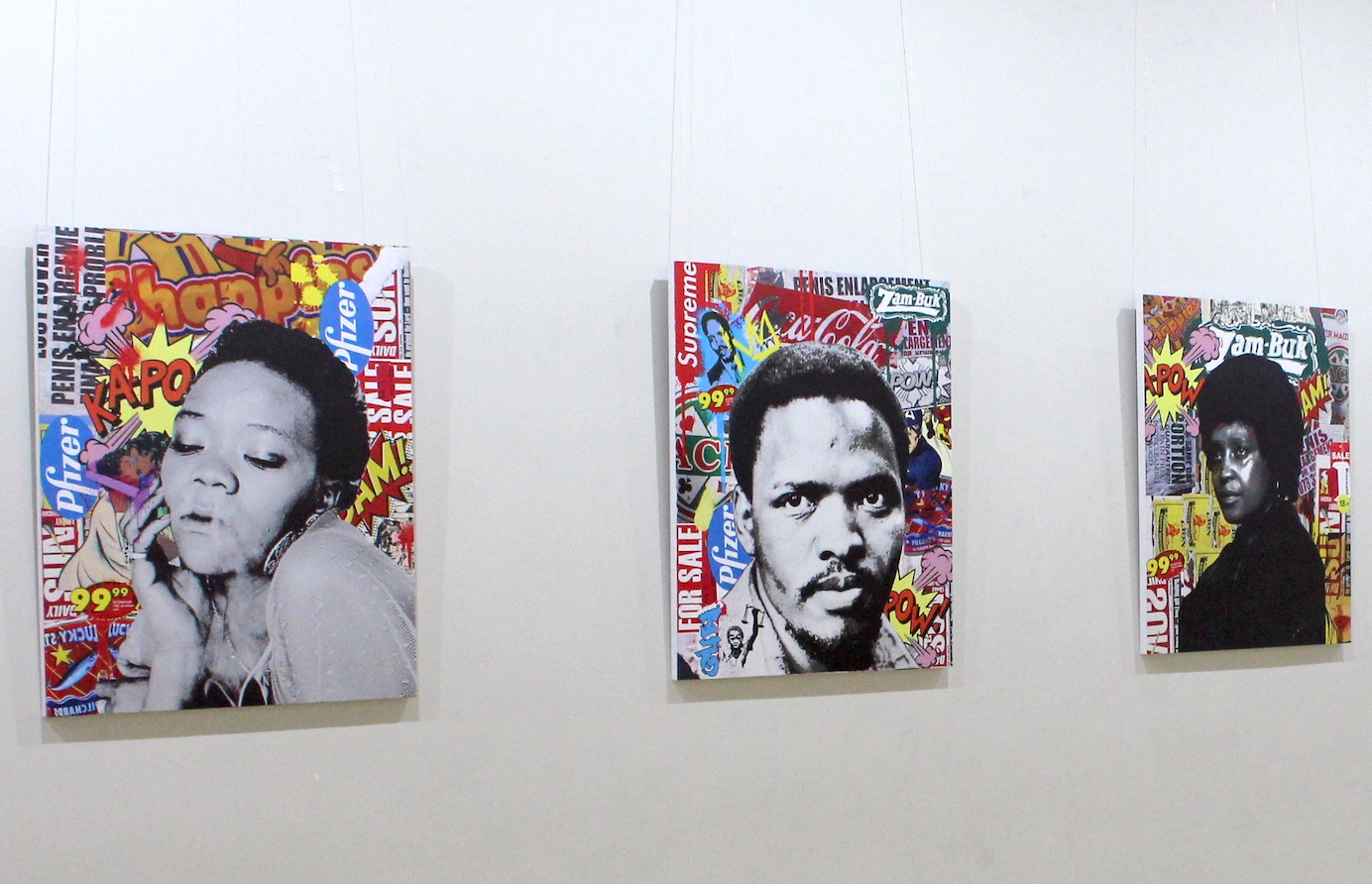In this Q&A, arts practitioner and blogger Zimkhitha Xwashu talks about her many projects to support the country’s young and upcoming artists.

Art & Conversations eGqeberha 2022 installation views (artworks by Asanda Mtana), image by Zimkhitha Xwashu
Contemporary And: You are a real advocate for the arts, creating so many networks and spaces for young artists in South Africa. What is your background and what is your great vision for the country’s art scene?
Zimkhitha Xwashu: I was first exposed to the art scene when I moved to Cape Town to study in 2016, although my current qualification isn’t related to arts and culture. I used to gallery hop when it was First Thursdays – Cape Town has so many galleries and museums, and my love for the arts grew so immensely. I was inspired to start an art initiative in 2020 when I moved back to my home province, which is less developed, meaning there is less happening in the creative space and fewer opportunities for artists. I saw a gap, and my objective is to contribute to growth and sustainability for emerging artists, especially those from disadvantaged communities, by creating spaces where they can show their work, network with fellow artists, and attract an audience.
C&: How does your environment, the specific local conditions, and the structures in which you work and live support your engagement, including financially?
ZW: eGqeberha does not have an easy environment to navigate and engage in, but I have received support from the local metro municipality in terms of providing me with the space I work in. The building in which we have the exhibitions is an entity of the Mandela Bay Development Agency and is under their arts, culture, and heritage office. Since pop-up art exhibitions are a new concept here, most people are hesitant to support it – they are used to traditional gallery spaces, to which not so many of the local artists have access. Financially the project hasn’t received much support, which limits its capacity for growth and its capacity to support emerging artists. So I face a couple of challenges.

Art & Conversations eGqeberha 2022 installation views (artworks by N’lamwai Chithambo) image taken by Zimkhitha Xwashu
C&: Your heart seems to beat for community, exchange, and empowerment. You co-created a safer space for young women in 2017 with H.E.R. Society. How did it come along and pave the way for all your other projects
ZW: H.E.R. Society was my first initiative, and I am very proud of the space I created and the impact it had on young women in my community – although it was for a short while because we started it when I was in my final year [at university] and then I was no longer living in Cape Town.
The society was sponsored financially by my student accommodation, so it operated exclusively for the female student tenants in my residence although we all came from different campuses and institutions. We had diverse backgrounds and our lives are shaped by different conditions, but I thought that if we could come together and have conversations and share experiences that would help each one of us to navigate life better as young females at uni. I witnessed so many girls around me being abused and some weren’t even aware that they were being abused, some were afraid to talk about it. There were no safe spaces and I saw a need for community and a sisterhood where we could have fun while empowering each other.
C&: In April 2020 you launched your art blog Chosi, on which you feature practitioners working in art, culture, and design. Out of this emerged the initiative Art & Conversations eBhayi, a non-commercial project that gives young artists the chance to present their work to an audience. Can you already see the ball rolling? How are your projects are affecting and changing the art scene?
ZW: I wouldn’t say that it is already changing the art scene but I would say that there is an impact for the artists I’ve collaborated with, especially on the first exhibition. They are now part of bigger platforms and have showed their work in Cape Town and in Joburg, which is a very big deal. Zulingile Hanise became part of the V&A Waterfront Artists’ Alliance and has exhibited at the Association of Visual Arts Gallery in Cape Town. Lithemba Nziweni and Luchwayito Vena were in Design Indaba’s Emerging Creatives in 2020 and 2021 and had their short film screened at the Africa Rising Film Festival in Joburg in late 2021. So it’s really great that Art & Conversations paves the way to bigger opportunities.

Art & Conversations eGqeberha 2022, installation views (artworks by Mfundo Malimela), image by Zimkhitha Xwashu
C&: Do you also network beyond South Africa’s borders and invite artists from the continent and the global Diaspora?
ZW: I try to network as much as I can, online and by attending art fairs in other cities where there is greater opportunity for meeting artists from the continent and the general global Diaspora. Malawian-Scottish artist N’lwamai Chitambo, who is currently enrolled at Rhodes University in Grahamstown, exhibited in the 2022 edition of Art and Conversations eGqeberha. I think that with time, as the initiative grows, I will be able to extend invitations and network more with creatives from the African and global Diaspora.
C&: Who are the young artists we should keep an eye on?
ZW: There are so many young artists to keep an eye on, many whom I wish to meet and work with as I grow in my career as an aspiring curator. Some of these artists include Assoukrou René Poupoint (Ivory Coast), Samurai-Farai (South Africa), Chuma and Sichumile Adam, Muofhe Manavhela (South Africa), Bubu Ogisi (Nigeria), and many more.
Interview by Theresa Sigmund.
GIVING BACK TO THE CONTINENT
More Editorial